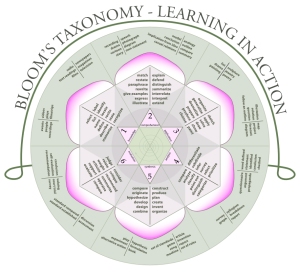 The premise of differentiated instruction is that we all learn in different ways; therefore, as teachers, we must employ a variety of teaching strategies and methods if we hope to reach all of our students. This also may be thought of as hands-on or experiential learning.
The premise of differentiated instruction is that we all learn in different ways; therefore, as teachers, we must employ a variety of teaching strategies and methods if we hope to reach all of our students. This also may be thought of as hands-on or experiential learning.
Yes, such thinking and practice derives largely from Benjamin Bloom (Bloom’s Taxonomy) and Howard Gardner (Multiple Intelligences). Elementary and secondary teachers are likely quite familiar with these fellows, but college profs may not be. Regardless, we probably all have realized that “one size does NOT fit all” when it comes to teaching. What, then, are we do with content-based courses (such as theatre history) if we don’t just lecture?
A few years ago, I offered a workshop for my colleagues at the KCACTF Region VI Festival in Tulsa. Here are some of the materials I shared. (Please note that some of these are copyrighted; if you plan to use and/or reproduce them, you should go to the original source/site listed at the bottom of the document.)
 What Is Differentiated Instruction?
What Is Differentiated Instruction?
What Are My Learning Strengths?
Learning Styles Inventory (Short)
